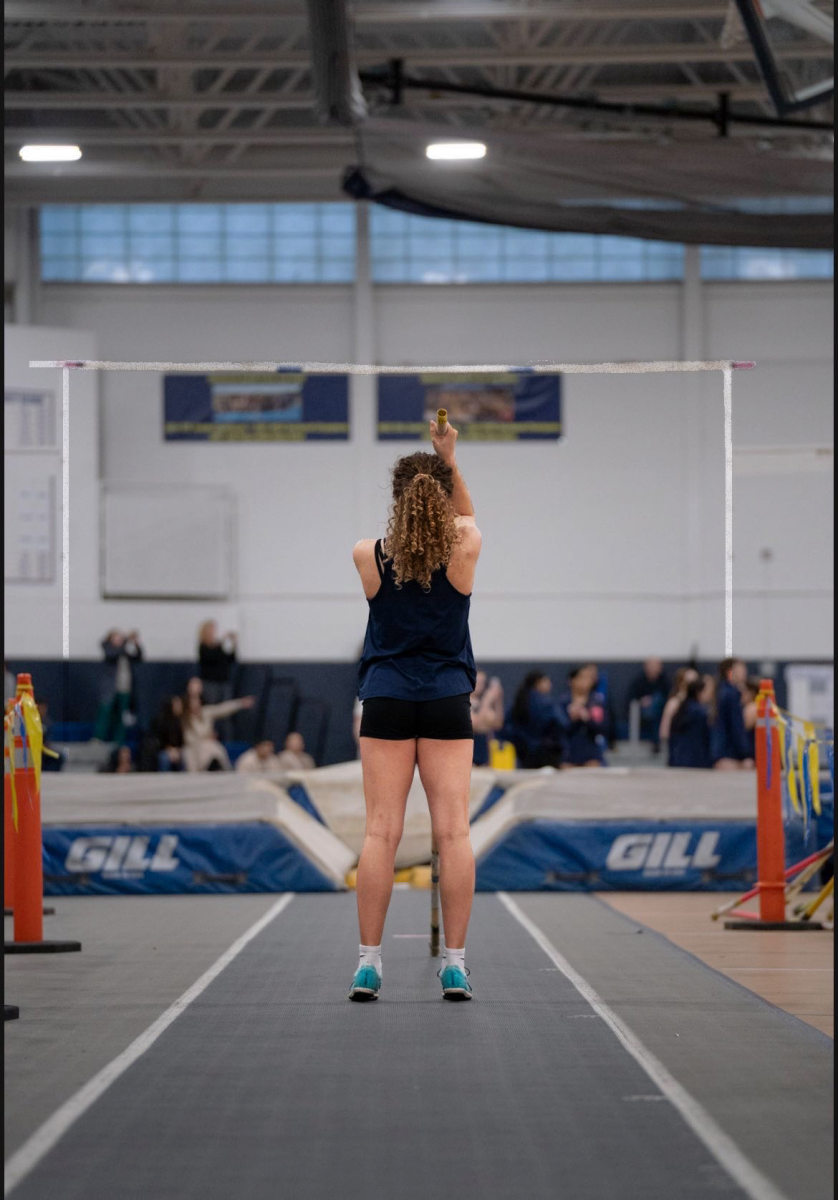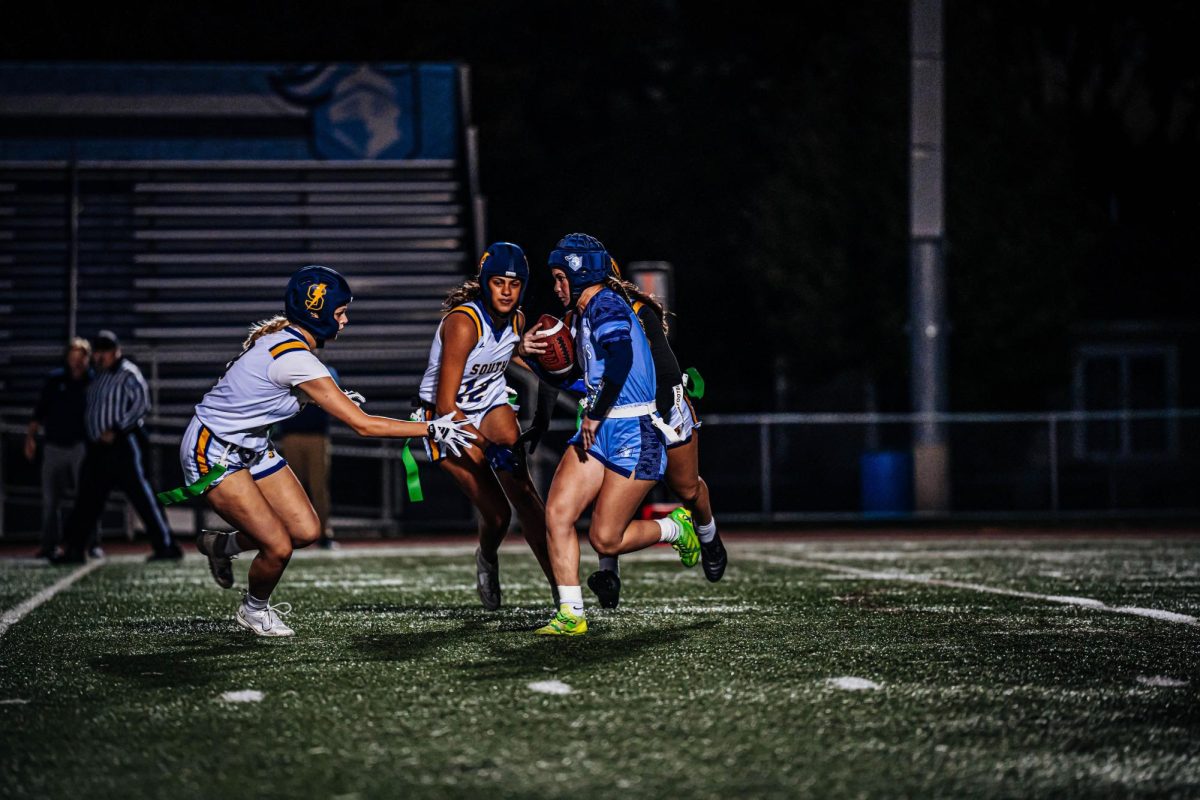When discussing Track and Field, events like relays, sprints, and various field activities usually come to mind. However, one event that is not normally talked about: pole vaulting.
As the Girls’ Pole Vault Team launches into its new season and standout sophomores like Marina Biscotakis and Haley Cornwell are making their mark, the question arises: how did these athletes get started in pole vaulting?
Estimates suggest that only around 15,000 girls compete in pole vault at the high school level, according to the National Federation of High School Associations. South ranks in the top percentage of schools with female jumpers, James Lonergan, Girls’ Pole Vault Coach said. Women’s pole vaulting was introduced to South in 2002 and the program keeps growing, Lonergan said.
Biscotakis was initially motivated to join Track and Field and attempt pole vaulting after watching a high school meet for the first time, she said.
“I joined Track and Field my freshman year [after] I saw [an athlete on the] boys’ pole vaulting team jumping over 14 ft, which I thought was cool,” Biscotakis said. “It inspired me to give [pole vaulting] a try.”
It did not take long for Biscotakis to adapt to the sport, to the point where one of her vaults broke a South record and earned her a gold medal at the indoor conference invite meet. The previous record was set at 10 feet, 7 inches by Sarah Zigman in 2005. Biscotakis recently tied the all-time outdoor school record set at 11 feet at home meet on March 20. “The highlight of my season was the indoor conference,” Biscotakis said. “I ended up getting a new personal best of 10 feet 8 inches, winning gold in conference, and beating the Girls’ Track and Field all-time school record. I felt very accomplished, considering I broke a 20-year record.”
However, Biscotakis won’t forget the grind and grit it took to reach this level. Pole vaulting involves many small details, and perfecting them takes time, she said.
“Since pole vault is a very technical sport, the most challenging aspect of it is trying to incorporate all the small details and corrections into the jump,” Biscotakis said.
“For example, if the run and plant of a jump isn’t right, then the rest of the jump won’t be good.”
While Biscotakis believes the physical demands of pole vaulting are the hardest element, Cornwell thinks it’s the mental challenges of the sport that’s the real challenge.
“I think the most difficult part is getting into your head [while] on the runway and how hard it is to focus on the vault,” Cornwell said. “When you can’t get out of your head, [you’re not] able to vault as well, and end up not [vaulting high] or performing badly.”
Lonergan agrees with Cornwell that pole vaulting is mentally tough. Lonergan tests the vaulters’ mentalities in practice so that it translates to meets. Maintaining focus and staying locked in is key when trying to get over the bar, he explained.
“[Performing well] comes down to confidence, and to develop confidence, vaulters need to jump from a very emotionally and psychologically safe position,” Lonergan said.








